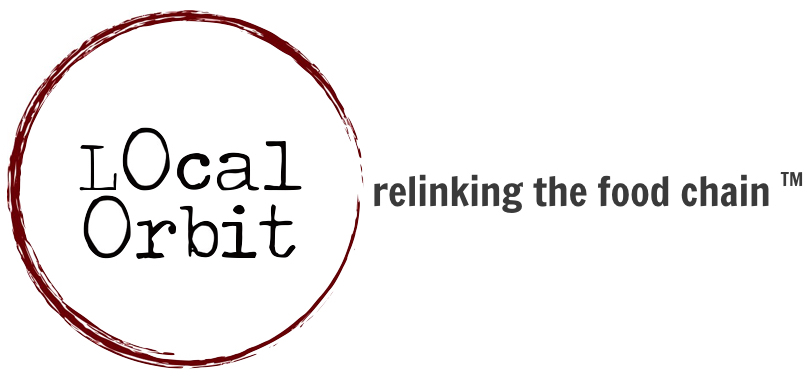As owner and President of Schu’s Hospitality, Larry oversees restaurant development, hospitality management services for food, service/lodging, strategic consulting, and niche consumer food products for a variety of clients. From 2014-2016 he was the interim Business Development Director of Food, Beverage and Hospitality for The Henry Ford. Larry has a long family history of food and hospitality experience, including owning and operating Schu’s Grill and Bar for 24 years.
We spoke with Larry about how local food procurement has changed over the past several years, and how local food is both a challenge and opportunity to institutions.
What’s the biggest challenge you see for large institutions purchasing local food?
The reality is that really maturing the farm to table model has been major challenge. Where do we source the product? How do we qualify it? How do we manage every farmer that comes to the back dock? How do we, as foodservice directors, stay in step with the rest of society? Sustainability is a big key word. But there are suppliers that have not been able to keep up with the trend. It takes a lot of time and effort to move juggernaut suppliers.
Tools that help you manage the farmers and connect to new farmers that are growing other things are important. There’s no way I’m going to be able to get in my car and drive around to every farm in the region to identify supply and pick up my radishes (or whatever). Flexibility and information about inventory are also necessary. If I’m normally buying 10 cases of something, and a supplier can easily say they only have 6 available, I can buy those 6 and find the other 4 somewhere else. That’s a big deal!
Our industry is still about relationships. We’re one of the last industries to get into technology. Now we’re starting to move at breakneck speed, but there’s no substitution for a warm handshake. And it gets right down to the final product that the guest or customer is eating. The product you represent provides a portal for relationship building with the end user and the supplier. You can create relationships with farmers, and if you’re willing to make a commitment to a supplier or farmer, they’ll grow more for you.
What has evolved in local food procurement over the past 5 years?
First of all, the big boys that have the resources, like Gordon Food Service and Sysco in our region, they’re all challenged with supplying to their end user the freshest product possible as well as the healthiest product possible. Those that realized this need some time ago are ahead, but are still challenged to meet the goal of local food. For the first time in many, many years, I’m seeing large suppliers that realize they need to be able to deliver the promise of local food if they want to compete. It’s one thing for a small restaurant – because of the volume you can source differently – but the need is growing in institutions as well. It has to be regionalized. Right now we get great products from California, but when it’s in season we should be able to get regional products.
Menu design is another big change. We need to design menus in a regional and seasonal fashion, and consumers are becoming more attuned to that. Now they’ll look at me and say, it makes sense that we serve pickled products in the dead of winter. The good restaurant companies have always been fairly attuned to this. Today even the fast food industry is waking up to this, just look at Chipotle or Qdoba.
What makes you hopeful about the local food system?
I’m not only hopeful but also excited about the expanding opportunity for agriculture today. Many years ago – 100 years ago – it was a way of life, but we got away from it. There was an emphasis on processed foods and the way of the farmer was pushed to the side and it was hard for a small farmer to make a living. I think there’s honor in that. It’s kind of like our industry for so many years. We were considered the burger flipping industry. If you were in the restaurant business people asked what you were going to do for your real profession. If you weren’t an owner you weren’t considered a real professional, but in Europe that’s not true. America has awakened to that, and I think television has helped with all the cooking shows.
I’m excited about what I’m seeing in the agricultural industry, it’s dedicated to healthier foods with fewer antibiotics and more humane meat. It’s going to change the way we’re buying; you’re going to see a more whole approach.
Is there one thing institutional foodservice operators can do today to increase local purchasing?
I am doing a lot of advising and consulting in that arena. Where do we go in the next ten years? How do we set up our kitchens and our receiving and our dining rooms to address this? Labor is a big challenge, not only finding it but training and paying for it. A full service model is expensive. As an independent operator, how can you handle that? I’m advising looking where your customer is now and where they’re going in terms of palate demands. Don’t think about the now, think ahead. The next 5 years are going to be a big opportunity for regional foods.
You’ll have the opportunity to work directly with Larry, along with a stellar group of supply chain innovators, at Local Orbit’s workshop, Transparency, Collaboration & Shared Value in Local Food Economies, November 7-9. Apply now!
Further reading: take a look at the National Restaurant Association’s 2016 What’s Hot Survey, looking at food trends from 2006 and expectations for 2026.

